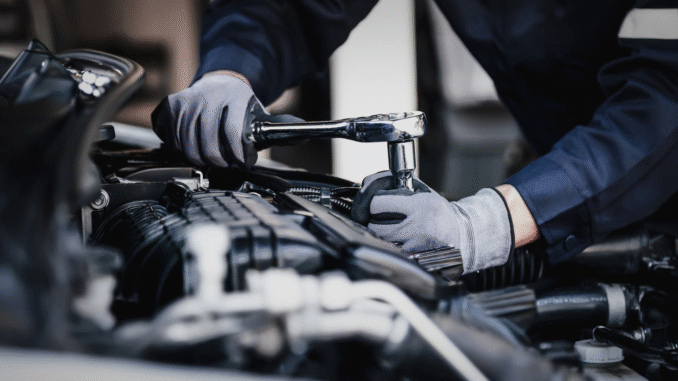
Top 10 Car Maintenance Tips to Keep Your Vehicle Running Smoothly
A well-maintained car doesn’t just run better—it lasts longer, saves money on repairs, and ensures your safety on the road. Whether you’re a new driver or an experienced car owner, following a regular maintenance routine is essential to keep your vehicle in top shape. In this article, we’ll cover the top 10 car maintenance tips to help you keep your car running smoothly year-round.
1. Check and Change Your Engine Oil Regularly
Engine oil lubricates the moving parts of your engine and helps prevent overheating. Over time, oil breaks down and becomes less effective.
Why it’s important:
- Prevents engine wear and tear
- Reduces friction and heat
- Improves fuel efficiency
How often to do it:
Check your oil level every month and change it every 3,000 to 7,500 miles, depending on your car’s make, model, and driving conditions. Always refer to your owner’s manual for the recommended interval.
2. Inspect and Replace Air Filters
The engine air filter keeps dirt and debris out of your engine. A clogged air filter can reduce performance and fuel economy.
Benefits of clean air filters:
- Enhances engine performance
- Improves gas mileage
- Reduces emissions
Tip:
Inspect your air filter every 12,000 to 15,000 miles or more frequently if you drive in dusty environments.
3. Maintain Proper Tire Pressure
Your tires are the only part of your car that makes contact with the road, making their condition critical for safety and performance.
Why it matters:
- Increases fuel efficiency
- Enhances handling and braking
- Prevents tire blowouts
Maintenance tip:
Check your tire pressure monthly, including the spare tire. Inflate them according to the manufacturer’s recommendations listed on the driver’s door or in the owner’s manual.
4. Rotate Your Tires Regularly
Rotating your tires helps them wear evenly and extends their lifespan.
How often:
Every 6,000 to 8,000 miles, or at every oil change.
Additional tip:
Get a wheel alignment check once a year or if your car starts pulling to one side. Misaligned wheels can cause uneven tire wear and poor handling.
5. Replace Worn Brake Pads
Brakes are one of your car’s most important safety features. Ignoring them can lead to serious damage and safety hazards.
Signs of worn brake pads:
- Squealing or grinding noises
- Reduced braking response
- Vibration while braking
When to replace:
Most brake pads need replacement every 25,000 to 70,000 miles, depending on usage. Have your brakes inspected at every service interval.
6. Top Off Fluids Regularly
Your car relies on various fluids to run smoothly, including:
- Coolant (prevents engine overheating)
- Transmission fluid
- Brake fluid
- Power steering fluid
- Windshield washer fluid
Maintenance tip:
Check all fluids monthly and top them off as needed. If you notice fluid leaks or rapid depletion, have your vehicle inspected by a mechanic.
7. Keep the Battery in Good Condition
A dead battery can leave you stranded without warning. Maintaining your car battery is easy and can save you a lot of trouble.
Battery care tips:
- Check for corrosion on terminals
- Test the battery voltage every few months
- Replace it every 3–5 years, or as needed
If your battery struggles to start the car, especially in cold weather, it may be time for a replacement.
8. Inspect Belts and Hoses
Belts and hoses play key roles in running the engine, power steering, cooling, and more. A failure in any of these can lead to breakdowns.
Look for:
- Cracks
- Fraying
- Leaks
- Bulges
When to inspect:
Every oil change or 3,000–5,000 miles. Most belts need replacement every 60,000 to 100,000 miles.
9. Wash and Wax Your Car
Regular washing doesn’t just keep your car looking good—it also protects the paint and prevents rust.
Why it’s essential:
- Removes dirt, grime, and salt
- Prevents corrosion
- Maintains resale value
Frequency:
Wash your car at least once a month and wax it every 3–6 months to protect the paintwork from UV rays and harsh weather.
10. Follow the Manufacturer’s Maintenance Schedule
Your car’s manufacturer provides a detailed maintenance schedule tailored to your specific vehicle. Following this schedule ensures that all major systems are inspected and serviced on time.
What it includes:
- Oil and fluid changes
- Tire rotations and alignments
- Timing belt replacements
- Spark plug and filter changes
Sticking to this schedule not only keeps your vehicle running smoothly but also helps maintain your warranty and resale value.
Bonus Tip: Keep an Emergency Kit in Your Car
While not a maintenance task, having an emergency kit can save the day when unexpected issues arise. Include essentials like:
- Jumper cables
- Flashlight
- Tire repair kit
- Basic tools
- First aid supplies
- Emergency blanket
Final Thoughts
Proper car maintenance doesn’t have to be complicated or expensive. By staying proactive and following these top 10 car maintenance tips, you’ll save money in the long run, increase your vehicle’s longevity, and stay safer on the road. A little attention now prevents major headaches later.
Remember: your car takes care of you—return the favor by taking care of it.
